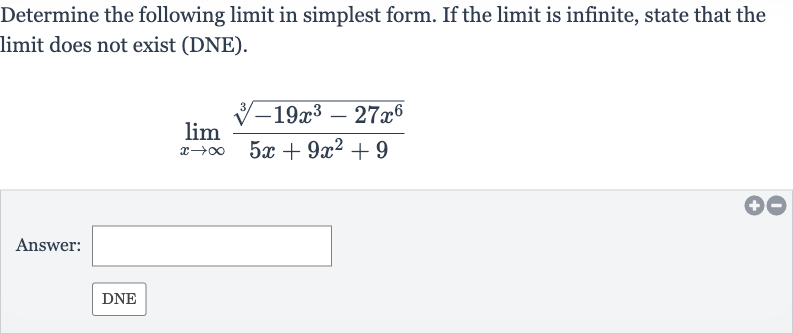Full solution
Q. Determine the following limit in simplest form. If the limit is infinite, state that the limit does not exist (DNE).Answer:
- Factor out highest power: We are given the limit expression . To simplify this, we will first factor out the highest power of in the numerator and denominator.
- Rewrite with factored terms: In the numerator, the highest power of inside the cube root is . We factor out from each term inside the cube root.
- Simplify cube root: In the denominator, the highest power of is . We factor out from each term.
- Divide by : Now we rewrite the limit expression with the factored terms.
- Approaching infinity: We can simplify the cube root of as because .
- Find limit: Now we divide both the numerator and the denominator by .
- Calculate cube root: As approaches infinity, the terms with in the denominator approach .
- Divide to get limit: Now we can find the limit of the simplified expression.
- Divide to get limit: Now we can find the limit of the simplified expression.The cube root of is .
- Divide to get limit: Now we can find the limit of the simplified expression.The cube root of is .Finally, we divide by to get the limit.
More problems from Power rule
QuestionGet tutor help
QuestionGet tutor help
QuestionGet tutor help
QuestionGet tutor help
QuestionGet tutor help

